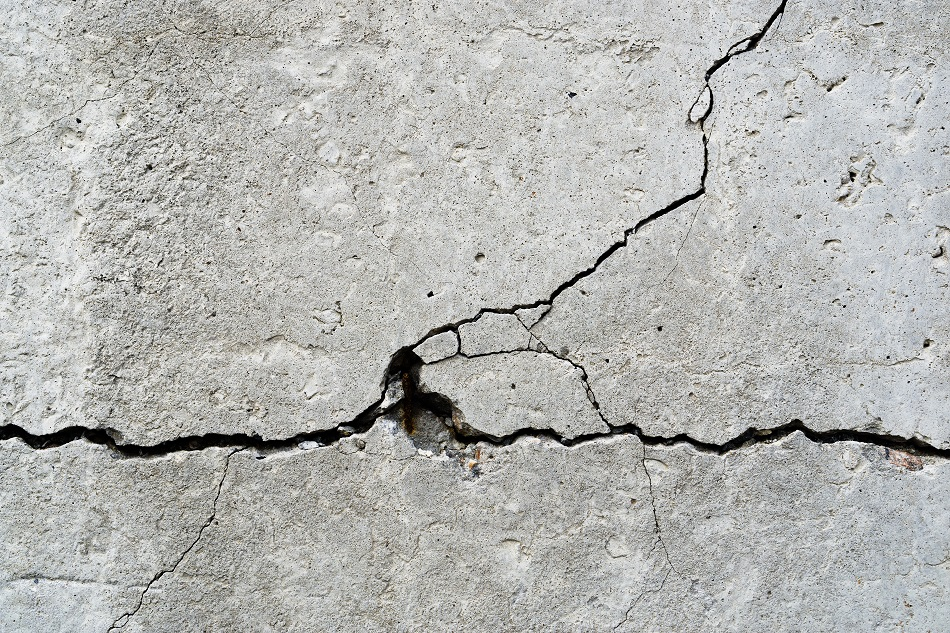
Image Credit: spacedrone808/Shutterstock.com
The presence of cracks in any type of concrete structure can not only be deleterious to its stability but can even result in deadly effects if left uncorrected. To avoid such unwanted effects, several metrology techniques have proven to be highly useful for the assessment of cracks within concrete structures.
Understanding Cracks in Concrete
Any type of civil structure that has been constructed with concrete material, such as buildings, bridges or roads, is susceptible to a wide range of defects including cracks and spalls. While a variety of factors can contribute to such defects in concrete structures, cracks typically arise as a result of a combination of factors, which can include drying shrinkage, thermal contraction, internal or external restraint to shortening, stress from applied loads and/or settlement. Regardless of the cause, severe cracking in such civil structures can reduce their serviceability and integrity.
Furthermore, the repair and maintenance of such defects can be extremely expensive, as demonstrated by the $10 billion USD spent each year in the United States on bridges alone.
Nondestructive Measurement Methods
Various destructive methods that are still widely used to assess the presence of cracks within concrete structures, particularly bridges; however, the low efficiency and economic effect of these tests has led many engineers to instead turn to nondestructive test methods.
Comparably, nondestructive test methods that are used to assess the presence of cracks in structures are often fast, efficient and eliminate any need for load tests or drilling to be performed. Some common non-destructive test methods used to determine the presence and severity of cracks within bridge structures include audio-visual, stress wave and electromagnetic methods.
Video-Based Methods
Video-based methods of crack inspection allow engineers and researchers to assess multiple sections of a given concrete structure from a remote distance without compromising the resolution of their captured data. Furthermore, such technology provides an ideal way of assessing critical areas of these structures that would otherwise be unattainable using nondestructive techniques.
In a recent 2018 study, researchers compared the efficacy of a non-contact video-based measurement system to estimate the surface-opening crack present on concrete beams within a laboratory setting to and impact-echo (IE) method. This system was comprised of three distinctive components, which included a single high-speed video camera that had been equipped with a sophisticated lens, a laptop attached to the camera that acted as a data acquisition and processing system and finally a labeled target on the concrete structure.
Ultimately, the results of this study found that the crack depth measurements obtained by the video-based method were slightly smaller than that which was obtained when the IE method was adopted. Despite these small differences, video-based techniques were found to be significantly superior as compared to when only visual inspection techniques were employed.
Wave-Based Methods
Several different ultrasonic methods are quite useful for the detection of cracks and other types of damage present within concrete structures. The incorporation of the time-of-flight detection technique, which involves the generation of stress waves on one side of the crack while the other side is monitored for wave arrival times, has been found to enhance the sensitivity of ultrasound analysis without compromising its ease of performance.
Despite the usefulness associated with ultrasonic waves for crack characterization, this class of non-destructive analytical methods is associated with certain limitations. As a result, researchers have turned to Rayleigh waves for their ability to carry a larger amount of energy as compared to ultrasonic waves. Furthermore, Rayleigh waves (R-waves) are associated with lower attenuation rates lower geometric spreading, the latter of which allows for these waves to travel at much longer distances while continuing to facilitate the detection of cracks at this distance.
Sources and Further Reading
- Wei Lee, F., Chai, H. K., & Lim, K. S. (2016). Assessment of Reinforced Concrete Surface Breaking Crack Using Rayleigh Wave Measurement. Sensors (Basel) 16(3). DOI: 10.3390/s16030337.
- Sun, Y., Huang, P., Su, J., & Wang, T. (2018). Depth estimation of surface-opening crack in concrete beams using impact-echo and non-contact video-based methods. EURASIP Journal on Image and Video Processing 144. DOI: 10.1186/s13640-018-0382-7.
- Pinto, R. C. A., Medeiros, A., Padaratz, I. J., & Andrade, P. B. (2010). Use of Ultrasound ot Estimate Depth of Surface Opening Cracks in Concrete Structures. E-Journal of Nondestructive Testing.
Disclaimer: The views expressed here are those of the author expressed in their private capacity and do not necessarily represent the views of AZoM.com Limited T/A AZoNetwork the owner and operator of this website. This disclaimer forms part of the Terms and conditions of use of this website.